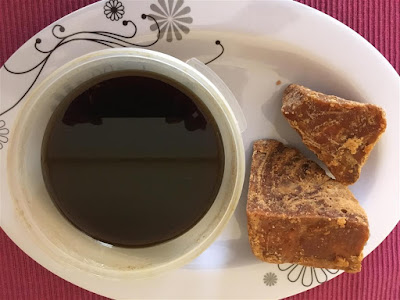President Davila, our District President, asked us if we would like to go with him and the District Young Women’s President and our Branch Primary President (who is almost 18) to attend Sunday meetings in the branch in Quiriza. Of course we would love to go.
The road to Quiriza was a real treat for us. It took us an hour to go 14 miles on a narrow, winding, dirt road. But the scenery was spectacular. We felt like we were in Capitol Reef in Southern Utah. There was even a part that looked like Cathedral Valley. Charlie took some good pictures. We couldn’t stop oohing and aahing at least in our hearts and minds, and sometimes out loud.
Here are a couple of the pictures along the way:
 |
| On the road to Quiriza. |
 |
| The Quiriza Chapel |
 |
| Whoops - this one really is southern Utah - Cathedral Valley in Capitol Reef National Park. |
There was a sister walking along the road from one of these little pueblitos. She was going to Quiriza to attend the LDS Branch. It would take her about two hours to walk to church. She is very faithful and is usually in attendance.
In 1967, Elder Spencer W. Kimball (Apostle) dedicated Bolivia for the preaching of the gospel. While there, he also dedicated the first chapel in Bolivia, in Quiriza.
In the February 1977 Ensign there is an article about the chapel in Quiriza, here is an excerpt:
“There’s an amazing chapel in Bolivia, the only chapel that has been officially dedicated in the country. When Elder Spencer W. Kimball’s visit to Bolivia was announced in the mid-1960s—at that time he was a member of the Council of the Twelve—the members in Quiriza, a small branch near the Argentine border, set themselves the goal of having their chapel ready to be dedicated.
“It was already under construction, and according to Hernán Sainz, now president of the La Paz Bolivia Central District, all went well until it was time to put the center beam in place. Then, to the members’ dismay, they discovered that someone had made a mistake: the beam was a good two feet too short. Splicing was impossible since the beam had to be in one piece to support the roof. The nearest city where they could get another was several hours away by bus, and they couldn’t guess how long ordering, cutting, and shipping it would take. Almost certainly, though, it would be impossible for them to finish the chapel in time.
“Discouraged, they held a special fast and prayed for the Lord’s help. The next morning, however, there still seemed to be no alternative to ordering the new beam, so they met at the chapel and lifted the beam up to take measurements. And it fit! It fit perfectly. The members who worship under that roof now share the quiet strength that comes from an unmistakable reminder that the Lord hears and answers prayer.”
 |
| The roof beam in the chapel at Quiriza. |
After Sunday School we divided into our various classes. The Primary and Young Women met in classrooms, the Priesthood met in the Chapel, and the Relief Society went out front to sit in the garden on cement benches. It was a beautiful setting. The Relief Society President gave the lesson and conducted. She welcomed me there. She said they didn't have manuals so she was giving the lesson from a pamphlet on Self Reliance – “Autosuficiencia”. I was impressed with her lesson and the comments that were made by the sisters. It was interesting to hear how self-reliance applies in this area where you can't be anything but self-reliant. She talked about what happens if there is no water in the river, and how our talents can be developed into skills that can earn us money if needed. She talked about some of the sisters there and how well they make certain dishes that they could sell. She talked about living the Word of Wisdom and how it will bless our children's lives and help them be more self-sufficient rather than addicted. She covered all six areas very well.
 |
| The Relief Society classroom. |
In the previous blog, we mentioned the man who was one of the first members in Bolivia (Diogenes Martinez). He passed the Sacrament and gave one of the prayers in Sacrament Meeting. I felt so much love for these faithful Saints. It was such a privilege to be with them, feel of their strength and their testimonies and especially, to partake of the Sacrament with them. I could see His image in their countenances. I told them so too as we were asked to bear our testimonies along with the other two sisters that came with us.
The road back was even more beautiful with full and happy hearts.
On a more mundane note, we finally got a bed frame, so we’re no longer sleeping on the floor. The Branch President in Rama América, Presidente Huarachi, is a carpenter, and he made it for us. It is lovely.
 |
| Before the slats are in. |
 |
| With the mattress in place. |
And, just to give you a feel for one of our means of transportation, here’s a link to a video of a “Torito”, or moto-taxi:
A moto-taxi, or Torito, in Tupiza, Bolivia.
And, just in case you want to see more of Quiriza, here's a link from our Mission President and his wife's blog about their trip to Quiriza. They had more time to take pictures because they didn't have a taxi driver waiting to return them to Tupiza.
















